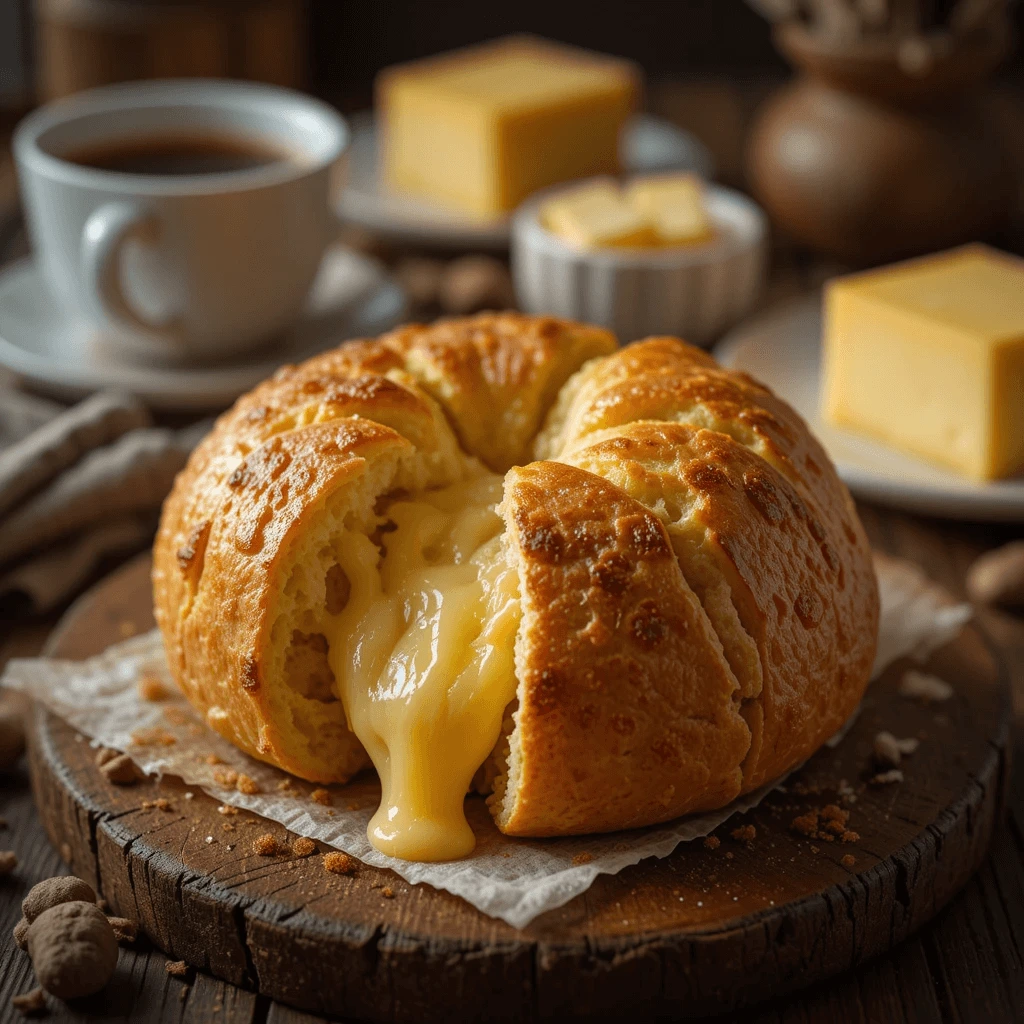Introduction:
Brazilian cuisine is known for its vibrant flavors and unique ingredients. One of the easiest and most delicious Brazilian dishes to make at home is the Brazilian Mounjaro recipe, a simple dish made from cassava flour, cheese, and butter. Whether you’re a seasoned chef or someone new to Brazilian cooking, this Brazilian Mounjaro recipe will quickly become a favorite in your home. In this guide, we’ll break down the Brazilian Mounjaro recipe step by step and provide expert tips to ensure your creation is as tasty as possible..
Table of Contents
Table of Contents
What is Brazilian Mounjaro?
Introduction to Brazilian Mounjaro Recipe
Mounjaro (often referred to as “Pão de Queijo de Mounjaro”) is a traditional Brazilian snack that hails from the northeastern regions of Brazil, where it has been enjoyed for generations. This simple yet delicious dish captures the heart of Brazilian comfort food and is beloved for its easy preparation and irresistible taste. The name “Mounjaro” comes from the region where it was first made, and it’s closely associated with the food culture of Brazil’s coastal and rural communities.
What makes the Brazilian Mounjaro recipe stand out is its simplicity—it’s made with only three basic ingredients: cassava flour (or tapioca flour), cheese, and butter. These ingredients, which are staples in Brazilian kitchens, come together to create a dish that’s both chewy and cheesy, with a crispy exterior and gooey inside. The balance of flavors and textures is what has made Mounjaro a favorite snack not only in Brazil but also among international fans of Brazilian cuisine.
It’s no surprise that the Brazilian Mounjaro recipe is often served at street markets, during celebrations, and even as part of family meals. Whether it’s served for breakfast, as an appetizer, or as a quick snack, Mounjaro is a versatile dish that can be enjoyed at any time of the day.
History and Origin of Brazilian Mounjaro Recipe
The origins of the Brazilian Mounjaro recipe trace back to Brazil’s northeastern regions, particularly in states like Pernambuco and Paraíba, where it was traditionally made by indigenous communities using ingredients that were readily available in their environment. These indigenous populations, who relied heavily on cassava (also called manioc) as a primary source of food, shaped many of Brazil’s iconic culinary traditions.
Cassava was not only a food source but also an integral part of indigenous life in Brazil. It was used in a variety of dishes, and the process of turning cassava root into flour became a key component in many Brazilian foods, including the Brazilian Mounjaro recipe. The combination of cassava flour, cheese, and butter over time transformed into the beloved snack that we know today.
As Brazil evolved and its diverse culinary practices grew, the Brazilian Mounjaro recipe became widely popular due to its chewy texture and rich, cheesy filling. While the dish’s specific origin is tied to Brazil’s indigenous culture, it is now considered a staple in Brazilian homes across the country, particularly in the northeast. It’s also frequently found at street food stalls, local celebrations, and festivals, where its combination of textures and flavors makes it a hit with people of all ages.
Why Brazilian Mounjaro Recipe is So Popular in Brazil
The enduring popularity of the Brazilian Mounjaro recipe can be attributed to a few key factors. First and foremost, its simplicity and cost-effectiveness make it accessible to a wide range of people. With just three basic ingredients—cassava flour, cheese, and butter—the Brazilian Mounjaro recipe can be prepared quickly and easily in almost any home kitchen. These ingredients are readily available in Brazil, and because of its affordability, Mounjaro is a go-to snack for people of all income levels.
Moreover, the dish’s versatility plays a big part in its popularity. The Brazilian Mounjaro recipe can be enjoyed at any time of day. Whether it’s served as an appetizer at a family gathering, a snack between meals, or even as a breakfast item with a cup of coffee, it fits seamlessly into various meals and occasions. The ability to customize the fillings and add herbs, spices, or different types of cheese allows Mounjaro to cater to a wide range of tastes.
Another reason why the Brazilian Mounjaro recipe is so cherished in Brazil is that it provides a gluten-free option for people who avoid gluten in their diet. Since it’s made from cassava flour, which is naturally gluten-free, Mounjaro has become a favorite for those with gluten sensitivities or celiac disease. The chewy, slightly crispy texture of Mounjaro provides a satisfying snack for anyone looking for a comforting, yet gluten-free alternative to bread or other wheat-based snacks.
Finally, Mounjaro’s rich, savory flavor is what truly sets it apart. The melty cheese inside contrasts perfectly with the crispy exterior, making it a delicious treat that appeals to both young and old. Its ability to bring a comforting taste of Brazilian comfort food into any home has made it a timeless snack for people across the globe.
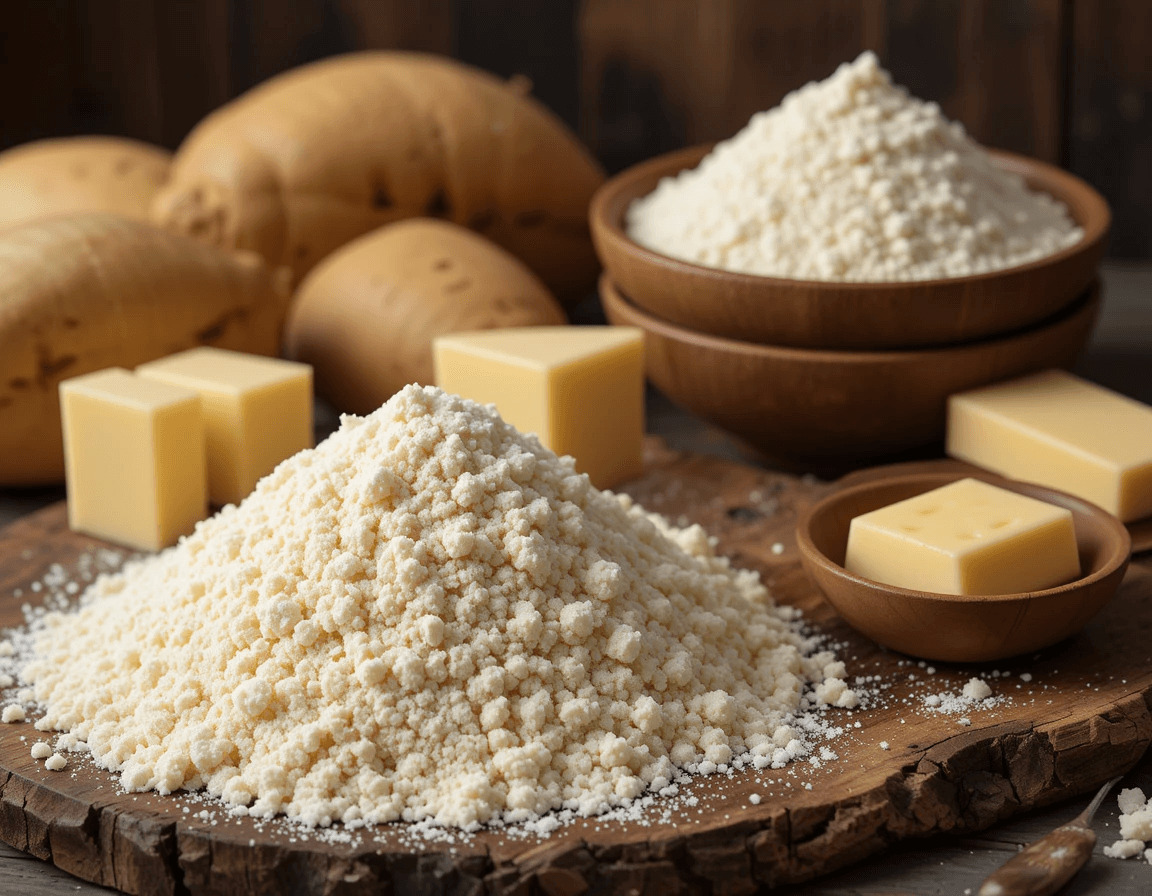
Ingredients for the Brazilian Mounjaro Recipe
Key Ingredients for Brazilian Mounjaro
To make the perfect Brazilian Mounjaro, you only need three ingredients, but the choice of each is crucial for achieving the right texture and flavor. Let’s explore each ingredient and why it is essential.
| Ingredient | Description | Why It’s Important |
|---|---|---|
| Cassava Flour | A gluten-free flour made from the cassava root. | Provides the base and texture, ensuring Mounjaro is chewy and holds together. |
| Cheese | Traditional Brazilian cheeses like Queijo Minas or Queijo Coalho. | Adds the signature gooey, melty center that makes Mounjaro irresistible. |
| Butter | A rich, fatty ingredient that provides moisture and flavor. | Helps achieve a crispy outer texture while enhancing the flavor of the dough. |
Key Ingredients for Brazilian Mounjaro
To create the perfect Brazilian Mounjaro, the ingredients are simple but essential for achieving the right flavor and texture. Let’s dive deeper into each of the three key ingredients that bring Mounjaro to life.
Cassava Flour (Tapioca Flour) – The Star of Mounjaro
Cassava flour is the foundation of the Mounjaro recipe. It’s a gluten-free flour made from the root of the cassava plant, which is native to South America. This flour has a neutral flavor and a slightly chewy texture when cooked, making it the perfect base for creating the dough for Mounjaro. Its unique properties help achieve the traditional texture that is characteristic of this Brazilian dish.
When cooked, cassava flour provides the dough with a soft yet firm texture, allowing it to hold its shape while creating that tender, chewy mouthfeel. This makes it ideal for dishes like Mounjaro, which needs both structure and elasticity to encapsulate the melty cheese filling inside.
| Benefit | Description |
|---|---|
| Gluten-Free | Cassava flour is naturally gluten-free, making Mounjaro a safe option for those with gluten sensitivities. |
| Neutral Flavor | The neutral taste of cassava flour doesn’t overpower the dish, allowing the cheese to shine as the star flavor. |
| Elasticity | Cassava flour contributes to the chewiness and softness of Mounjaro’s dough, providing a satisfying texture. |
TIP: Cassava flour is often confused with tapioca flour because both are derived from the cassava root, but they are different. Cassava flour is ground from the whole cassava root, retaining its starch and fiber, while tapioca flour is extracted from just the starch. Using cassava flour ensures you get the right dough consistency and texture for Mounjaro, so make sure to use cassava flour for the best results.
Cheese – The Heart of Mounjaro
The cheese is the defining component of Mounjaro, giving it its rich, savory, and gooey center. In Brazil, traditional cheeses like Queijo Minas (a mild, soft cheese) or Queijo Coalho (a slightly firmer cheese) are commonly used. These cheeses are perfect for melting and create a delightful contrast with the crispy outer layer of the dough.
When the Mounjaro cooks, the cheese inside becomes soft and gooey, oozing out with each bite and creating an irresistible texture. The mild flavors of Queijo Minas complement the chewy dough perfectly, while Queijo Coalho adds a bit more bite and flavor.
| Cheese Type | Description |
|---|---|
| Queijo Minas | A mild, soft cheese with a creamy texture, often used in Brazilian snacks. |
| Queijo Coalho | A firmer cheese that holds up well to heat, providing a slightly squeaky texture when melted. |
| Mozzarella | If you can’t find Brazilian cheese, mozzarella is a great substitute that melts beautifully. |
TIP: If you can’t find Brazilian cheeses like Queijo Minas or Queijo Coalho, you can substitute with mozzarella or any mild melting cheese. Mozzarella, with its stringy melt and neutral flavor, works especially well in this dish.
Butter – For Richness and Flavor
Butter plays an important role in achieving the desired crispy, golden-brown exterior of Mounjaro. It adds richness and flavor to the dough, making each bite satisfyingly indulgent. Butter also helps bind the dough together, ensuring that the final product maintains a chewy and soft interior while providing a crunchy outer texture.
The combination of butter with cassava flour ensures that the dough doesn’t dry out during cooking, giving Mounjaro its signature moist and tender bite. Additionally, butter infuses a subtle richness into the dish, elevating the overall flavor profile.
| Butter Type | Description |
|---|---|
| Unsalted Butter | A neutral choice that lets the flavors of the cheese and dough shine through. |
| Salted Butter | Adds a touch of seasoning to the dough, enhancing its flavor. |
| Clarified Butter (Ghee) | Adds a nutty flavor and works well for high-heat cooking, making the exterior extra crispy. |
TIP: If you want to add a touch of extra flavor to your Brazilian Mounjaro recipe, consider using clarified butter (ghee). Ghee has a slightly nutty flavor and can withstand higher cooking temperatures, making it perfect for achieving a golden-brown, crispy exterior without burning the butter. This adds depth to the dish, enhancing both flavor and texture, and giving your Mounjaro a rich, satisfying finish.
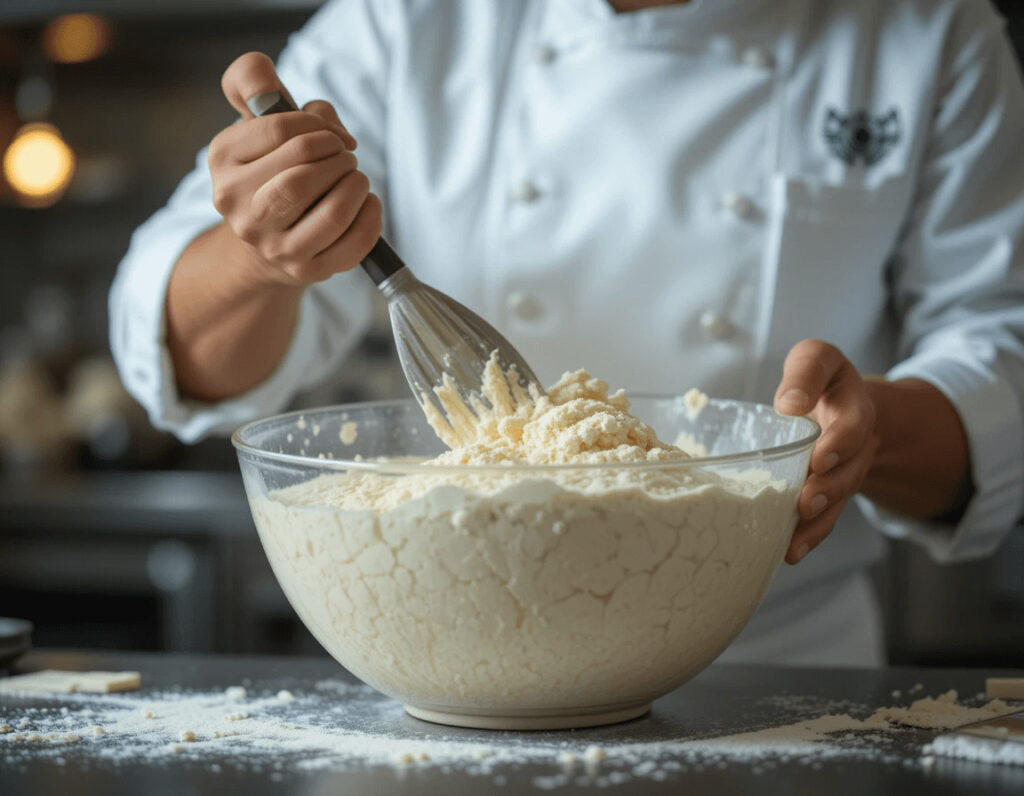
Step-by-Step Mounjaro Recipe
How to Make Brazilian Mounjaro
The process of making Mounjaro is surprisingly easy, and with just three ingredients, it takes less than 30 minutes to prepare. Here’s a detailed breakdown of each step to help you make the perfect Mounjaro.
| Step | Instructions |
|---|---|
| Step 1 – Prepare the Dough | Combine cassava flour with water and a pinch of salt. Mix well to form a dough that’s not too sticky. |
| Step 2 – Shape the Dough | Divide the dough into small balls and flatten each ball into a pancake shape. |
| Step 3 – Add the Cheese Filling | Place a chunk of cheese in the center of each dough disc. Fold it over and seal the edges. |
| Step 4 – Cook the Mounjaro | Heat butter in a skillet and cook the filled dough on both sides until golden brown and crispy. |
| Step 5 – Serve and Enjoy | Let it cool slightly before serving to enjoy the crispy, cheesy goodness! |
Tips and Tricks for Perfect Mounjaro
Tips for Making the Best Brazilian Mounjaro
Here are a few expert tips that will take your Mounjaro to the next level and help you avoid common mistakes.
| Tip | Description |
|---|---|
| Use Room Temperature Ingredients | Ensure butter and cheese are at room temperature to create a smooth dough. |
| Adjust the Cooking Time | Cook on medium heat to avoid burning the outer dough before the cheese melts inside. |
| Experiment with Cheese Varieties | While Brazilian cheeses are best, mozzarella or cheddar can work as alternatives. |
Health Benefits of Brazilian Mounjaro
Why Brazilian Mounjaro Can Be a Healthy Choice
Though it’s a comfort food, Mounjaro can also offer health benefits, particularly when made with high-quality ingredients.
| Benefit | Description |
|---|---|
| Gluten-Free | Cassava flour makes this dish naturally gluten-free, perfect for those with gluten sensitivities. |
| Rich in Protein & Calcium | The cheese provides a good source of protein and calcium, essential for bone health and muscle function. |
Variations of Brazilian Mounjaro
Customize Your Mounjaro with These Variations
While the traditional Brazilian Mounjaro recipe is simple, you can add your own twist with these variations.
| Variation | Description |
|---|---|
| Add Herbs or Spices | Add oregano, thyme, or basil to the dough for extra flavor. |
| Sweet Mounjaro | Add sugar to the dough and use cream cheese or ricotta for a sweet version of Mounjaro. |
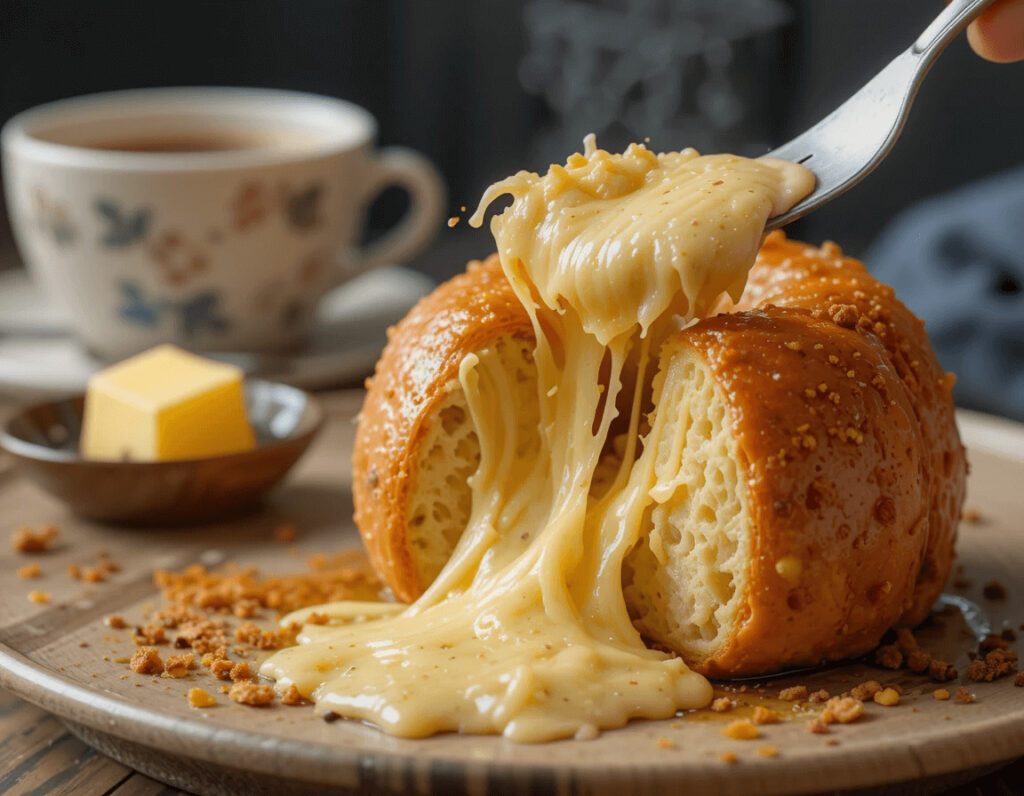
Mounjaro Pairings
What to Serve with Brazilian Mounjaro Recipe
While Brazilian Mounjaro is delicious on its own, it pairs wonderfully with a variety of side dishes and beverages. Whether you’re serving it for breakfast, a snack, or as part of a larger meal, these pairings will complement its rich, cheesy flavor and crispy texture.
1. Brazilian Drinks
Pair your Brazilian Mounjaro recipe with a refreshing Brazilian drink like Guaraná soda or Coconut Water. Guaraná is a sweet, carbonated drink that provides a unique, tropical flavor that pairs well with the savory richness of Mounjaro. For a lighter, more refreshing choice, Coconut Water is an excellent option that brings a natural sweetness and a hydrating quality to the meal.
2. Brazilian Beans (Feijão)
A traditional side to many Brazilian dishes is Brazilian beans (Feijão). These beans are hearty and flavorful, making them an excellent accompaniment to the light and cheesy Mounjaro. Serve them with a side of rice for a complete, filling meal. The combination of the rich beans and the crispy Mounjaro is a great way to experience authentic Brazilian flavors.
3. Fresh Tropical Fruit Salad
A tropical fruit salad made with fruits like mango, pineapple, papaya, and guava can be a perfect, refreshing complement to the savory richness of Mounjaro. The natural sweetness and acidity of the fruits help balance the flavors of the dish and provide a bright contrast to the cheese-filled dough.
4. Brazilian Salads
A simple Brazilian-style salad with tomatoes, cucumbers, lettuce, and olive oil dressing can provide a light and refreshing contrast to the rich flavors of Mounjaro. The acidity from the tomatoes and the fresh, crisp texture of the cucumber will enhance the savory bite of the Brazilian Mounjaro recipe.
5. Coffee
If you’re enjoying Mounjaro for breakfast or as a mid-morning snack, a cup of Brazilian coffee (strong, black, and flavorful) can be the perfect pairing. The deep, rich flavors of Brazilian coffee complement the crispy, cheesy Mounjaro and enhance its comforting nature.
| Pairing | Description |
|---|---|
| Brazilian Drinks | Pair with Guaraná soda or Coconut Water for a refreshing combination. |
| Side Dishes | Serve with a side of Brazilian beans, a fresh salad, or tropical fruit like mango, papaya, and pineapple. |
FAQs about the Brazilian Mounjaro Recipe
Frequently Asked Questions (FAQs) about Brazilian Mounjaro Recipe
PPA1: Can I Use Different Flours for Brazilian Mounjaro Recipe?
Yes, you can experiment with different gluten-free flours like almond flour or coconut flour as a substitute for cassava flour in the Brazilian Mounjaro recipe. However, it’s important to note that the texture and consistency may change. Cassava flour has a unique ability to provide the chewy and elastic texture that Mounjaro is known for. Substituting with almond flour might result in a slightly denser and crumbly texture, while coconut flour may absorb more liquid and create a firmer dough. If you choose to substitute, adjust the liquid content accordingly to maintain the right dough consistency.
Can Brazilian Mounjaro Recipe Be Made Ahead of Time?
Absolutely! You can prepare the dough for Brazilian Mounjaro recipe in advance and store it in the refrigerator for up to 24 hours. When you’re ready to cook, simply shape the dough into discs and proceed with the recipe as usual. This can save time if you’re preparing for a party or gathering. If you’ve already added cheese to the dough, it’s best to cook it right away or store it in the fridge, as the cheese may begin to soften too much over time.
What Other Cheese Can I Use for Brazilian Mounjaro Recipe?
If you can’t find traditional Brazilian cheeses like Queijo Minas or Queijo Coalho, there are plenty of substitutions that work well for the Brazilian Mounjaro recipe. Mozzarella is one of the best alternatives as it melts beautifully and has a mild flavor. Cheddar can also be used for a slightly sharper taste. Other good options include Fontina, Provolone, or Gouda—just make sure the cheese you choose melts well to create that gooey, cheesy center.
Can Brazilian Mounjaro Recipe Be Frozen?
Yes, you can freeze uncooked Mounjaro. Once you’ve shaped the dough and added the cheese, place the discs on a baking sheet and freeze them for a few hours until solid. Afterward, transfer them into a zip-lock bag or airtight container for long-term storage. When you’re ready to cook, there’s no need to thaw them—just cook them straight from the freezer. You may need to add an extra minute or two to the cooking time.
Is Brazilian Mounjaro Recipe Gluten-Free?
Yes, Mounjaro is naturally gluten-free because it’s made with cassava flour, which is derived from the cassava root and contains no gluten. This makes it an excellent option for those following a gluten-free diet. Just be mindful of the cheese you use, as some processed cheeses may contain traces of gluten. However, in most cases, traditional cheeses like mozzarella or cheddar are gluten-free.
Conclusion
Why You Should Try Brazilian Mounjaro Recipe Today
Brazilian Mounjaro is the perfect balance of simplicity, flavor, and authenticity. With just three ingredients, you can create a delicious dish that brings the essence of Brazilian cuisine into your kitchen. Whether you make it for a snack, breakfast, or light meal, Mounjaro is sure to delight.
What makes the Brazilian Mounjaro recipe stand out is its versatility. The combination of cassava flour, cheese, and butter creates a flavor profile that is rich and satisfying without being overwhelming. The crispy exterior and gooey, cheesy center make it a treat that appeals to both kids and adults. It’s the type of dish you can serve during casual get-togethers or even impress guests with its authentic Brazilian touch.
This recipe is perfect for anyone looking for a gluten-free option or a simple comfort food that doesn’t take hours to prepare. It’s a great way to experiment with Brazilian flavors in the comfort of your own home.
Beyond Mounjaro, Brazilian cuisine is rich in flavors and unique ingredients that can elevate any meal. Pão de Queijo, Brigadeiro, and Feijoada are just a few examples of other Brazilian dishes you can try. By embracing these traditional recipes, you can expand your culinary horizons and bring a taste of Brazil into your everyday cooking.
Embrace Brazilian Cooking
Cooking Brazilian dishes at home isn’t just about following recipes; it’s about embracing the culture and the joy of sharing food with others. Brazilian cuisine celebrates vibrant, fresh ingredients, bold flavors, and a sense of community. As you experiment with Mounjaro and other Brazilian foods, you’ll discover how food brings people together, creating moments of joy and connection.
Whether you’re hosting a Brazilian-themed dinner party, looking for a quick snack, or simply curious about the flavors of Brazil, Mounjaro is a fantastic place to start. The simplicity of the ingredients, combined with the depth of flavor, makes this recipe a must-try for anyone interested in exploring the world of Brazilian cuisine.
Final Thoughts
Mounjaro is not just a dish; it’s an experience. The ease of preparation and the unique flavors make it a standout in the world of simple snacks. Plus, it’s a dish that anyone can enjoy, regardless of cooking experience. So why wait? Head to your kitchen, grab those three ingredients, and experience the deliciousness of Brazilian cuisine today!
Once you try this recipe, it won’t be long before you’re hooked. So go ahead, give it a try, and see for yourself why Brazilian Mounjaro is loved by so many. Happy cooking!
For more amazing recipes that you’ll surely love : here’s the link
Print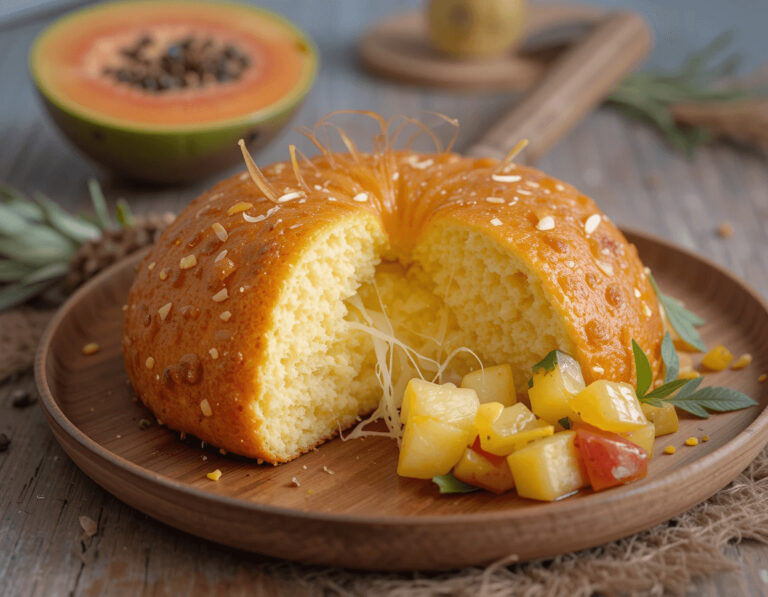
Ultimate Guide to the Brazilian Mounjaro Recipe with Just 3 Ingredients
A simple and delicious Brazilian Mounjaro recipe made with just three ingredients—cassava flour, cheese, and butter. These cheesy, chewy treats are crispy on the outside with a gooey cheese filling inside. Perfect for a snack, breakfast, or appetizer, this gluten-free recipe brings a taste of Brazil right to your kitchen.
- Total Time: 25 minutes
- Yield: 12 Mounjaro servings (approximately) 1x
Ingredients
2 cups cassava flour
1 cup cheese (Queijo Minas, mozzarella, or a mild melting cheese)
1/2 cup butter (unsalted)
1/2 cup water
Pinch of salt
Instructions
Preheat the pan on medium heat and melt butter.
In a bowl, mix the cassava flour with a pinch of salt and water. Stir until it forms a dough.
Divide the dough into small portions and flatten each into a disc shape.
Place small chunks of cheese in the center of each dough disc, then fold it over to seal.
Cook the dough on the heated pan, pressing slightly, until both sides are golden brown and crispy.
Serve hot and enjoy the gooey cheese inside!
Notes
You can experiment with different types of cheese. Mozzarella and cheddar work well as substitutes for Queijo Minas.
For a richer flavor, consider using clarified butter (ghee).
You can freeze uncooked Mounjaro for later use. Just cook from frozen by adding an extra minute or two to the cooking time.
- Prep Time: 15 minutes
- Cook Time: 10 minutes
- Category: Snack, Gluten-Free, Brazilian Cuisine
- Method: Pan-Fried
- Cuisine: Brazilian
- Diet: Vegetarian
Nutrition
- Serving Size: 1 Mounjaro (serves 12 total)
- Calories: Approx. 150-180 calories per serving (depending on cheese used)
- Sugar: 1g (depending on cheese and butter used)
- Sodium: 150-200 mg per serving (depending on cheese and salt)
- Fat: 12g
- Saturated Fat: 7g
- Unsaturated Fat: 3g
- Trans Fat: 0g
- Carbohydrates: 15g
- Fiber: 2g
- Protein: 4g
- Cholesterol: 25-30mg per serving (depending on the butter and cheese used)
Keywords: Brazilian Mounjaro, Brazilian snack, gluten-free, easy recipe, cheesy snack, Pão de Queijo, Brazilian appetizer

